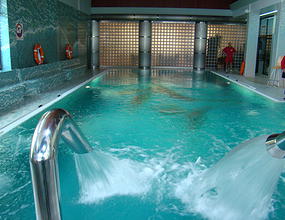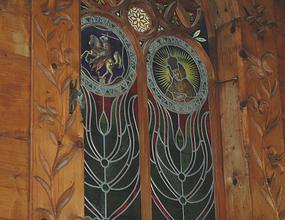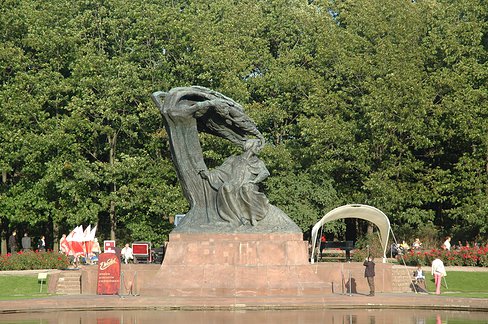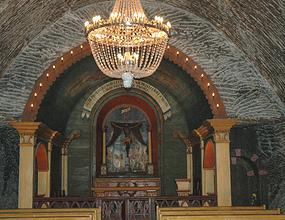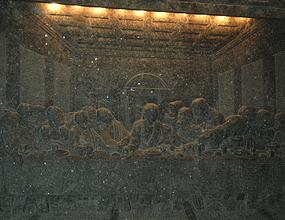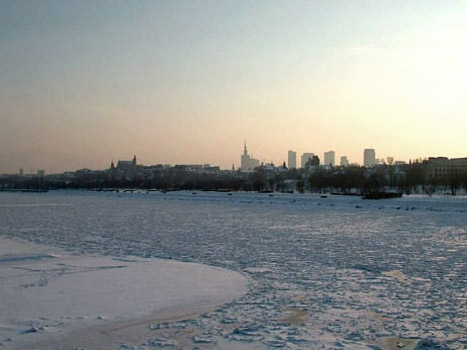
Subhash Motwani
In 2007, I was invited for a familiarization tour in September and I was looking forward to visiting Poland, a country of great diversity. We started by visiting the area of the Royal Lazienki Park or the Royal Baths which comprises of 76 hectares or roughly 142 acres and is regarded as one of the most impressive garden complexes in Europe. Within the park is the stunningly beautiful Palace on Water (Palac na Wodzie) which was commissioned by the last King of Poland- King Stanislaw August Poniatowski as his summer residence. Another highlight is the monument of Frederic Chopin.
The Wilanow Palace and Park has special significance as it was never destroyed during World War II and it is 350 years old. The Old Town and the Royal Castle were reconstructed and found their way on the UNESCO World Cultural Heritage Site. Warsaw is also well known for its Operas, theatres, cinemas, museums and art galleries. The Warsaw arms has been rendered as a mermaid with a sword and a shield in hand representing Melusina, the fresh water mermaid from the Vistula river. Within the Old Town, you can also see the house of Madam Curie, the famous physicist and chemist, a pioneer in the field of radioactivity, who was born in Warsaw.The next day was a long day indeed, one of the longest of our tours as we were to head to Kazimierz Dolny (Lubin) and later to the Baranow Sandomierski Castle and finally to the spa town of Krynica Zdroj. It is approximately a two hour drive from Kazimierz Dolny and from here one can visit the Baltowski Jurassic Park, the Wieliczka Salt Mine as well as many other interesting sites. After spending an hour at the Castle, we headed for the night to Krynica Zdroj and the famous Dr Irena Eris Spa Hotel, almost a 3 hour drive from the Baranow Castle where we would be spending the night and on the following day doing a tour of the region of Krynica before heading to the winter capital of Poland.
Once you are on top of Jaworzyna Krynicka range, you can enjoy some warm beer with honey at the bar on top of the mountain and along with it have some fine polish pastries without feeling guilty, especially if you are burning a few calories after a hike or trek along the mountain range. Interestingly, at the gondola station as well as on top of the range there were statues of various species of dinosaurs, probably indicating that the place was waiting to be discovered from the times of the Jurassic period. The view from up above is stunning and on a clear day you can get a panoramic view of the Beskidy, Pieniny as well as the Tatra Mountains.
The Salt Cave is the latest and an original method of using marine salt from the Dead Sea for rehabilitation, prevention and health care. The cavern has a unique microclimate and the air is filled with mineral and microelements. You can simply shut your eyes and relax in deckchairs with soft soothing music playing in the background which relieves stress and rejuvenates you after a short session comprising of a unique color therapy system along with a combination of warm light which stimulates you for the rest of the day. The salt cave has curative effects and ideal for those who come for prolonged sessions of treatments.
The town of Zakopane which is known as the winter capital of Poland was discovered in the mid 19th century as a poor village at the foot of unknown mountains. Today, Zakopane is Poland’s best known centre for recreation and rest, an excellent cultural and sporting venue and receives over 3,5 million tourists every year even though it has a population of a mere 28800 inhabitants.
The oldest part of the town, known as Nawsie, is full of old wooden buildings and at the intersection of Krupówki and Koscieliska Streets, you will find the first parish church built here known as the Stary Kosciólek or the Old Church. The Krupowki Street where we were staying is one of the most well known pedestrian streets in Poland where vehicles are prohibited. A significant building is the Tatra Museum Poland’s oldest regional museum dating back to 1889 which has an extensive collection of natural, ethnographic and artistic interests documenting the rich history of the Tatra Mountains.
The first use of skis in Zakopane was in 1892 and the first major ski competition was held here in 1909. Later Zakopane has hosted 3 World Ski Championships in 1929, 1939 and in 1962 as well. Zakopane has also hosted Ski Jump World Cups and several Nordic and Alpine European cups. Wielka Krokiew is not only a regular ski jumping site hosting World Cup level events but it is also historical as in 1997, Pope John Paul II celebrated a mass at the hill station during his visit to this native country. Ski jump is as popular in this region as cricket is in India. Our halt en route was at the historic Belvedere Hotel which is a 4 star property, undoubtedly the best hotel in Zakopane where Aamir Khan, Kajol and the crew of Fanaa, the Bollywood movie stayed during the film shoot at one of the most stunning locations of Poland.
Rafting across the Dunajec gorge is the best way to visit the Pieniny National Park. The rafting season lasts from April until the end of October.
The Pieniny mountains are mainly built from limestone and you see these perpendicular walls on either side rising from the Dunajec River. The most famous peak is the Trzy Korony or the Three Crowns which rises 982 metres above sea level The Pieniny also forms part of the Carpathian which is one of the biggest mountain ranges in Europe. The Tatra mountains are divided into three parts: The first part is the White Tatras which is predominantly within Slovakia and is built of limestone. Then comes the High Tatras and are part of the Eastern Tatra Mountains on the Poland-Slovak border. And then there is the Western Tatras which is lower down. In the Polish side of the Tatras there is over 250 kilometres of marked trails for walkers and hikers who wish to explore the area. There are plenty of activities in the area; skiing in winter, paragliding, mountain biking. One of the most popular peaks of the Tatras is Kasprowy Wierch which is 1987 metres above sea level and can only be reached by cable car. The Tatra National Park along with is Slovak equivalent is part of the UNESCO’s biosphere preserve today.
Later we headed for Zakopane and we strolled along Krupówki Street before heading to an interesting dinner along with folkloric music and dance at Restaracja Bakowo Zohylinia Niznio. We were welcome with some highlander tea and warm wine which was followed by a sumptuous Oscypek or highlander cheese from barbecue and cranberry and Moskol which is the highlander potato pancake with garlic butter which was followed by a wide variety of main courses and some fine desserts. Thereafter headed to see the Jaszczurowka wooden church which is peculiar to this region and we got to see a lot of typical highlander architecture on our way to the Strazyska Valley where we headed next to see the Siklawica waterfall. Zakopane is one of the very few places in Poland where the old tradition is being practiced of wearing the old traditional costumes. In August every year there is an International Festival of Highland Folklore in Zakopane which runs for about 2 weeks where groups from different parts of Europe and as far as even Tibet come and participate.
Krakow lies to the south of Poland on the Vistula River and the drive from Zakopane to Krakow takes a little over 2 hours to cover the distance of 110 kilometres. Commuting within Krakow is very convenient as a single trip ticket valid on a bus or a tram costs 2.50 PLN (Polish Zlotys) which is equivalent to INR 45 approx or you could purchase a 24 hour pass which costs 10.40 PLN or INR 190 approx. If you want to explore the city on your own then you can also purchase the Krakow Tourist Card valid for 2 or 3 days that gives you access to public transport as well as free entry in up to 32 Krakow Museums as well. The card is also valid on the city bus route which takes you to Krakow International Airport. A 2 day card costs PLN 45 (INR 820 approx) or a 3 day card would cost you PLN 65 (INR 1185 approx) which would take care of your commuting as well as visits to the museums.
After checking in we took the tram to the Jewish Old Town of Kazimierz for some Jewish dinner. The UNESCO enlisted Wieliczka Salt Mine is located 10 kilometres from Krakow. You can reach the Salt mines by a local train or a minibus and it takes you 40 minutes to reach the oldest salt establishment in Poland which has been functioning since the Middle Ages and today is one of the most popular Polish tourist attraction receiving over 1 million visitors every year.
The Salt Mine at Wieliczka was enlisted with UNESCO in 1978 and in 1994 it was acknowledged as a National History Monument by the President of Poland. Spread over 9 levels underground, the mine reaches to the depth of 327 metres and consists of over 300 kilometres of corridors comprising of more than 3000 chambers. The tourist route is accessible for a stretch of 3.5 kilometres located from 60 to 135 metres below ground level. This architectural marvel comprises of underground lakes and excavations, chapels carved in salt, sculptures and bas-reliefs which leaves every visitor in awe especially to see life in an underground city with a restaurant, a post office, telephone booths and souvenir shops with internet access and use of mobile phones at 125 metres below ground level, thus providing the right blend of tradition with technology. There are salt mines across the world, but what makes Wieliczka special is that besides being one of the oldest mines, the mine itself is so enormous and comprises of magnificent sculptures made of salt. The salt mine has the unique distinction of being featured in the Guinness Book of World Records as the first ever underground hot air balloon flight was performed in one of its enormous chambers. Also the first ever underground bungee jump has taken place within the Salt Mine and that tells you the depth of each chamber within the Salt Mine. The Salt Mine has been host to some famous personalities such as Copernicus, Pope John Paul II and Goethe, to name a few. The most beautiful of all the chambers is the one which houses the St. Kinga’s Chapel as well as a reproduction of Da Vinci’s The Last Supper which is simply stunning. The chamber has hosted many weddings and parties and are ornated with chandeliers which illuminates the fine work around the chamber. The floor is of course, salt, but it appears to be as smooth as marble and the masterpieces on display took 3 miners almost 70 years to complete. The chamber was laid out in 1896 after the excavation of a huge green salt block and is 54 metres long, almost 18 metres wide and 10 to 12 metres in height. The fine work within this chamber is that of the Morkowski Brothers and Antoni Wyrodek.
A visit to the mine can take almost 2 hours and the mine can only be visited with a guide. The temperature within the mine is stable at around 14 degrees celcius and it is advisable to wear a jacket to feel comfortable during your visit. Social events such as conferences, banquets, weddings, New Year’s Eve Ball, concerts as well as sport performances can be organized in the mine. There is also an Underground Rehabilitation and Treatment Centre situated in the Lake Wessel Chamber for those who wish to be cured from upper respiratory tract problems and allergies. To see the entire mine it would take almost an entire week and that too would not be sufficient and although we saw just 1% of the mine, it left us completely awestruck. A visit to the mines is a must for all those who visit Poland and especially Krakow.
The city of Krakow indeed has several properties of historical importance and you need atleast 5 days to explore this beautiful city including its environ such as Wieliczka Salt Mines, and also Auschwitz which is located at the estuary of the Sola to Vistula River in the southern Oswiecismska Valley and was the largest concentration camp between 1940-45 during Hitler’s Germany. You could also do a day trip to Zakopane, the Winter Capital as well as visit Czestochowa to see the Jasna Gora Monastery – one of the holiest places in Poland and an important destination from pilgrims across the globe especially to visit the Chapel of the Black Madonna. The Jasna Gora Monastery is located 90 minutes northwest of Krakow and has been the spiritual hub of Central Europe for six centuries and is the third largest Catholic pilgrimage site in the world.
Lined up on Krakow’s main square of Rynek Glowny you will find the horse carriages who are in no rush and not far away you see the Wawel Hill which overlooks this beautiful city. On Wawel Hill stands the Renaissance Royal Castle and the Wawel Cathedral which has witnessed the crowning and burial of Polish Kings. Also known as the national Pantheon, this area has also been the place of burial for eminent artists and national leaders. The St. Adalbert’s Church on the Main Market Square of the Old Town and the St. Andrew’s Church date from Poland’s early Middle Ages, the 10th and the 11th Centuries. The St. Mary’s Basilica is in Gothic style and was built in the 14th Century.Krakow was a multi-national city with Italians, Germans, Jews, Armenians, Hungarians, Czechs, amongst other nationalities during the 16th century and it still continues to be one of the most cosmopolitan cities in Poland. Krakow was once part of the “Amber Road” which used to run from Rome to the Baltic Coast along the Vistula River and here you find many articles made of Amber even today and you can get it at a good price as well.Many head back home and some of us flew to Berlin to explore the beautiful region of Saxony which lies in former East Germany easily accessible from Poland.



